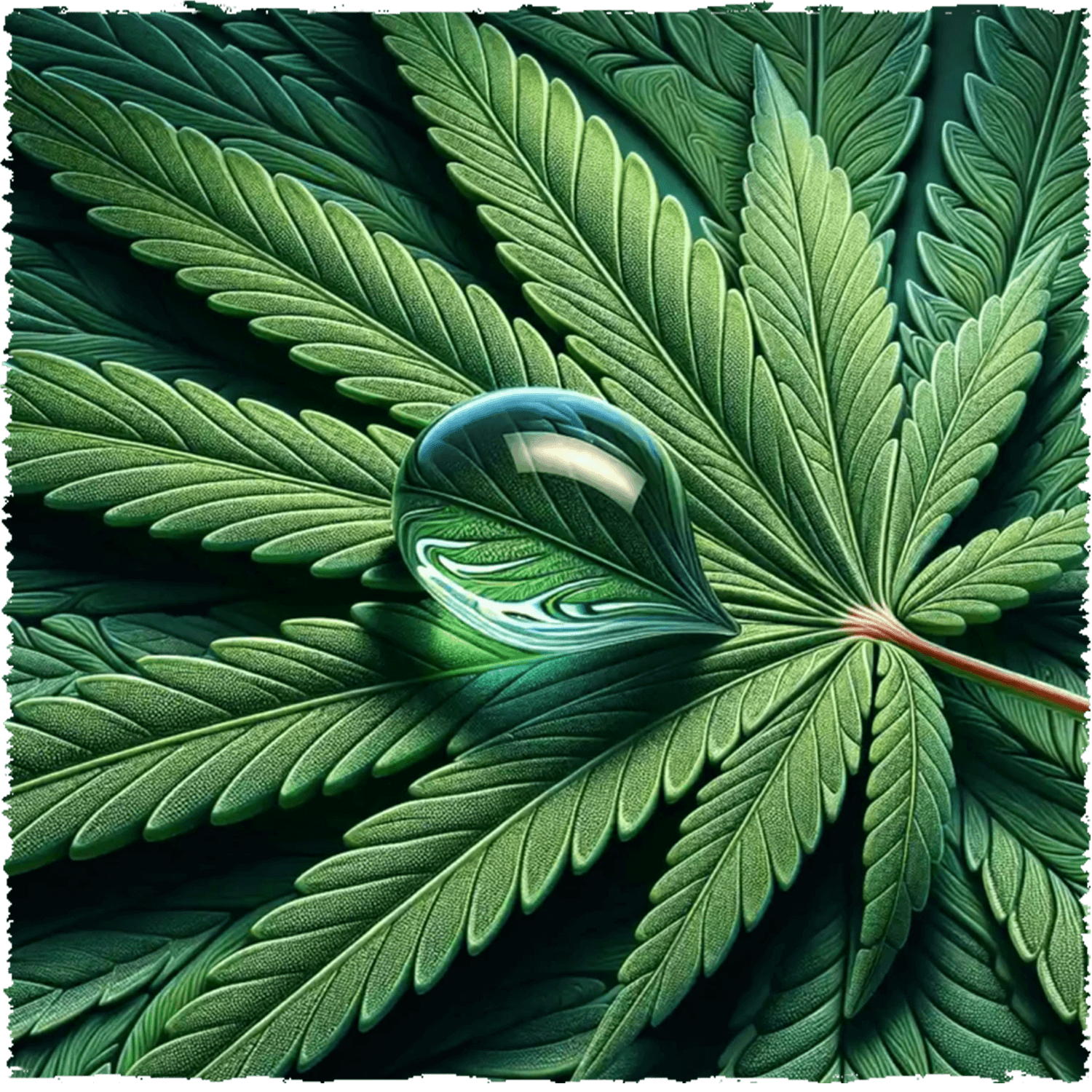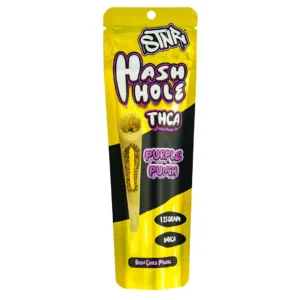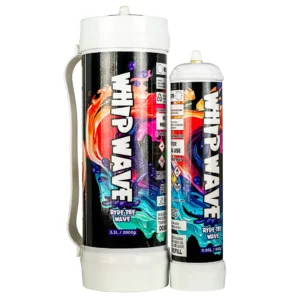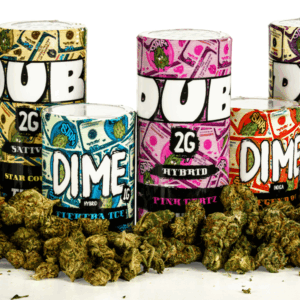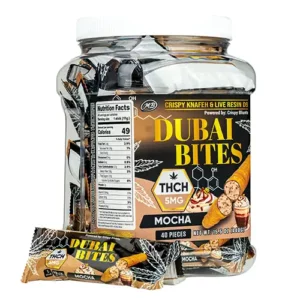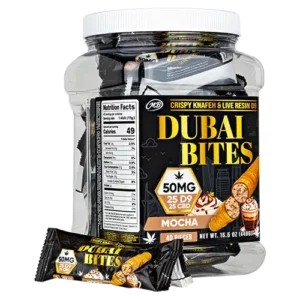Cannabis, a plant known for its complex chemical makeup, contains more than 100 cannabinoids. Two of these cannabinoids have garnered significant attention: THC-A (tetrahydrocannabinol acid) and THC (delta-9-tetrahydrocannabinol). As important cannabinoids, it’s essential for both cannabis enthusiasts and occasional users to grasp the difference between THC-A vs THC.
THCA and THC, although similar, have notable variations in their effects, benefits, and legal status. This article delves into these cannabinoids, serving as a comprehensive guide to their distinct characteristics.
Our discussion begins by explaining the basic chemical structure of THCA and how it acts as the non-intoxicating precursor to THC. We then explore the therapeutic advantages of THC-A and its lack of psychoactive properties. The focus then shifts to THC, the main psychoactive component in cannabis that produces the “high.”
We also examine the psychoactive effects and potential dangers associated with THC consumption. While discussing different cannabis strains, we emphasize the significance of THC:CBD ratios in achieving desired results. The article also covers common methods of THC use and offers insights on navigating legal limitations.
By the end of this article, you’ll have a comprehensive understanding of THCA and THC – fundamental elements that shape your cannabis journey!

What is THC-A?
THC-A, or tetrahydrocannabinol acid, is a cannabinoid found in the raw cannabis plant. It holds a unique place in the pantheon of cannabis compounds due to its foundational role in the production of THC, the primary psychoactive component of cannabis.
Basic Structure
THC-A is structurally similar to THC, but it includes an additional carboxyl group. This group is pivotal because its presence prevents THC-A from binding effectively to CB1 receptors in the brain, which is necessary for psychoactive effects.
Role as a Precursor
Before heat or aging initiates a transformation, THCA resides in the trichomes of fresh cannabis plants as a non-psychoactive compound. As such, consuming raw cannabis leaves or flowers won’t have the intoxicating effects many associate with marijuana. Instead, THCA remains in its acid form, offering potential therapeutic benefits without the high.
Decarboxylation Process
The conversion of THCA into THC occurs through a process known as decarboxylation. When you apply heat – whether by smoking, vaping, or cooking – you effectively remove the extra carboxyl group from THC-A, turning it into delta-9-tetrahydrocannabinol (THC). This chemical reaction alters the molecular structure and unlocks the psychoactive potential of the compound.
The distinction between THC-A vs. THC is crucial for users seeking specific effects from their cannabis experience. While both share similarities in their origin within the cannabis plant, their impacts on the human body are markedly different due to this decarboxylation process.
Understanding these nuances empowers users to make educated decisions about consumption methods and desired outcomes. Whether one opts for raw cannabis rich in THCA or seeks out products that facilitate its conversion to THC, knowledge about these compounds and their transformations will guide that choice.
Moving forward, exploring how THCA stands on its own without becoming psychoactive offers insight into its role beyond being merely a precursor to THC.
THC-A: Non-Psychoactive and Therapeutic
THC-A, short for tetrahydrocannabinolic acid, is distinct from THC in that it possesses non-psychoactive properties due to its molecular structure. This difference in psychoactivity is largely attributed to how these compounds interact with the body’s endocannabinoid system, specifically the CB1 receptors.
CB1 Receptor Interaction
Unlike THC, which binds readily to CB1 receptors in the brain and produces psychoactive effects, THCA shows limited binding affinity. Since it does not fit neatly into these receptor sites, you don’t experience the intoxicating ‘high’ associated with THC. This characteristic of THCA makes it a point of interest for those seeking the therapeutic benefits of cannabinoids without psychoactivity.
As research into cannabis and its components continues to develop, THCA has shown promise in various therapeutic applications:
- Anti-inflammatory Properties: Several studies suggest that THCA has anti-inflammatory capabilities, which could be beneficial in treating conditions like arthritis or lupus. Its ability to reduce inflammation without the psychoactive side effects offers an advantage for users who need to maintain clarity and functionality.
- Neuroprotective Properties: Preliminary research indicates that THC-A may have neuroprotective qualities. These findings point towards its potential efficacy in helping prevent neurodegenerative diseases such as Parkinson’s and Alzheimer’s.
The exploration of THCA benefits is ongoing, with scientific inquiry delving deeper into how this cannabinoid can contribute to health and wellness. By understanding the role of THC-A as a non-psychoactive component with possible therapeutic effects, you can make informed choices about your cannabis consumption based on personal needs and preferences.
Remember: While the lack of intoxication might make THC-A seem like a universally suitable option, individual reactions can vary. It’s important to consider personal health conditions and consult healthcare professionals when integrating cannabis products into your regimen.

Understanding THC: The Psychoactive Cannabinoid
When you think of cannabis, the compound that often comes to mind is THC or delta-9-tetrahydrocannabinol. This well-known cannabinoid is the primary psychoactive component in cannabis. Unlike its precursor, THCA, THC has a strong affinity for the CB1 receptors found throughout our bodies, particularly in the brain and central nervous system.
How THC Works in Our Bodies
When THC binds to these receptors, it produces the characteristic “high” commonly associated with cannabis use. This includes feelings of relaxation, euphoria, altered sensory perception and, in some cases, vivid hallucinations.
The Creation of THC: From THCA to THC
Perhaps one of the most fascinating aspects of THC lies in its creation. You might be surprised to learn that raw cannabis plants don’t naturally contain large amounts of this psychoactive compound. Instead, THC is derived from THCA through a process called decarboxylation.
What is Decarboxylation?
Decarboxylation is the process by which a carboxyl group (COOH) is removed from a molecule through heat or other means. In the case of cannabis, decarboxylation converts THCA (non-psychoactive) into THC (psychoactive).
How Does Decarboxylation Happen?
Remember when we discussed how THCA is converted into THC? This transformation doesn’t occur spontaneously. Rather, it requires heat and time. When cannabis is smoked or vaporized (methods which involve heat), THCA rapidly decarboxylates into THC. Even when cannabis is stored at room temperature for an extended period, decarboxylation can occur slowly over time.
To put it simply, without THCA, there would be no THC. So while they may seem like separate entities due to their differing effects on the body and mind, THC and THCA are intrinsically linked as different stages in the life cycle of a single cannabinoid.
As we continue to delve into the world of cannabis, keep in mind that understanding these nuances can greatly enhance your appreciation for this versatile plant and its myriad compounds.
Psychoactive Effects and Potential Risks of THC
When we talk about the psychoactive effects of THC, we often think of the different experiences people have, such as feeling happy and relaxed or having a different perception of things. These effects are what make THC appealing to users who are looking for a unique experience.
Euphoria: Intense Happiness and Excitement
Euphoria is a state of intense happiness and excitement. When THC enters your bloodstream and reaches your brain, it binds to cannabinoid receptors, specifically CB1 receptors. This interaction leads to the release of dopamine—a chemical in the brain associated with pleasure and reward—causing feelings of joy or euphoria.
Relaxation: Calmness and Peace
Next is relaxation. Many people who use cannabis say they feel calm and relaxed after consuming products with THC. This is because THC has the ability to reduce neural activity, slowing down brain function and creating a sense of peace and tranquility.
Altered Perception: Changes in How You Experience Things
Lastly, altered perception is a common effect of THC. It can make you perceive time, space, and even your own body differently. Some people may notice that colors appear brighter, sounds are more distinct, or touch feels more intense.
While these effects can be enjoyable for many individuals, it’s also important to be aware of the potential risks that come with using too much THC:
- Heightened Anxiety: Some people may find that high doses of THC make their anxiety worse instead of relieving it. While others may find that cannabis actually helps them manage their anxiety.
- Cognitive Impairment: Using large amounts of THC can cause short-term memory problems and difficulty with coordination. It’s important to be mindful of how much you’re using and how it might affect your ability to think and move.
These risks highlight the need to use THC in moderation. It’s important to find a balance between enjoying the positive effects while avoiding any potential negative effects by being informed about what you’re using and paying attention to how it affects you.
Different Strains, Different Ratios: THC and CBD
When choosing cannabis strains, it’s crucial to consider the ratio of THC to CBD. This ratio determines both the therapeutic effects and the likelihood of negative reactions in your body. The THC:CBD ratio refers to the amount of THC (delta-9-tetrahydrocannabinol) compared to CBD (cannabidiol) present in a specific strain. Here’s why this is important:
Desired Effects
Different users have different goals when using cannabis. Some people are looking for the euphoric and mind-altering effects that THC provides, while others are more interested in the calming and anti-inflammatory properties of CBD. The THC:CBD ratio can influence these effects in the following ways:
- A higher THC:CBD ratio can enhance psychoactivity, making it suitable for users who want stronger sensations or potential benefits like pain relief.
- On the other hand, a higher CBD content may offer relaxation without intense psychoactivity, which can be preferable for day-to-day use or for those who are sensitive to THC.
Minimizing Negative Reactions
For some individuals, high levels of THC and low levels of CBD can lead to unwanted side effects such as anxiety or paranoia. CBD has been found to counteract some of these negative effects by reducing THC’s ability to activate certain receptors in the brain. Therefore, a balanced THC:CBD ratio might help reduce the possibility of experiencing discomfort.
Tailoring Your Experience
Knowing the THC:CBD ratio helps you personalize your cannabis experience according to your needs and preferences. For example:
- A 1:1 ratio (equal parts THC and CBD) is often recommended for a balanced effect, where neither compound dominates the other. This balance can be ideal for beginners or those who want to avoid strong psychoactive effects.
- If you’re specifically looking for high levels of either THC or CBD, you can choose a strain with a ratio that reflects your desired outcome.
Medical vs. Recreational Use
Patients who use cannabis for medical reasons may require specific ratios depending on their condition and symptom management needs. In contrast, recreational users usually prioritize the intensity and quality of the psychoactive experience over specific ratios.
The Entourage Effect
It’s important to remember that cannabis strains are not just defined by their THC:CBD ratios. They also contain other active compounds such as terpenes and additional cannabinoids, all of which work together to create what is known as the entourage effect. This means that the combined presence of these components may produce more pronounced or balanced effects compared to using THC or CBD alone.
Choosing the Right Product
Here are some tips for selecting a cannabis product that suits your needs:
- When visiting a dispensary, don’t hesitate to ask about the THC:CBD ratio of different strains. The staff should be knowledgeable and able to provide guidance based on their product offerings.
- Remember that while certain strains are specifically bred to have particular ratios, others may naturally possess them due to their genetic makeup.
- Be aware that research in this area is still ongoing, and new strains are constantly being developed to cater to different preferences and therapeutic requirements.
By understanding these factors, you can increase your chances of finding a strain that matches your desired effects while minimizing the risk of unwanted side effects.

Variety of THC Administration Methods
When exploring THC consumption methods, you’ll come across various options, each with its own characteristics that affect how quickly it takes effect and how long it lasts. Here’s a closer look at the landscape of cannabis consumption:
Smoking
- Onset: Rapid, often within minutes
- Duration: Typically 1 to 3 hours
- Method: Burning dried raw cannabis flowers and inhaling the smoke delivers THC directly to the bloodstream through the lungs.
Smoking is one of the oldest and most traditional ways of consuming raw form cannabis. The immediate onset is because THC is quickly absorbed into the blood through the lungs when you inhale the smoke. This makes smoking cannabis buds a preferred method for those who want fast relief or immediate effects.
Vaping
- Onset: Quick, similar to smoking
- Duration: Comparable to smoking, around 1 to 3 hours
- Method: Heating cannabis oil or dry herb just enough to turn THC into vapor without burning the plant material.
Vaping offers a smoother alternative to smoking. It heats the cannabis product to a temperature that releases THC cannabis molecule in vapor form. This method reduces the inhalation of combustion by-products and can provide a clearer flavor profile of the strain used.
Edibles
- Onset: Delayed, typically 30 minutes to 2 hours
- Duration: Extended, can last anywhere from 4 to 8 hours or more
- Method: Eating foods infused with THC allows for digestion and processing by the liver before entering the bloodstream.
Edibles, like brownies or gummies, provide a discreet and convenient way to consume THC. Because they’re processed in the liver, they produce a different kind of “high” and take longer to kick in compared to methods involving inhalation. The effects also tend to last much longer, making edibles suitable for sustained relief over time.
Topicals
- Onset: Variable; localized effect usually within minutes
- Duration: Can vary widely based on product formulation
- Method: Applying THC-infused creams, balms, or lotions directly onto the skin for targeted relief without psychoactive effects.
Topicals target specific areas of the body for localized relief. They’re great for people who want the therapeutic benefits of THC without any change in their mental state. Since THC doesn’t typically enter the bloodstream in significant amounts through the skin, topicals don’t produce psychoactive effects.
By understanding these methods and how they affect how quickly THC takes effect and how long it lasts, you can choose the best way to consume based on your needs and preferences. Whether you’re looking for immediate relief through inhalation or a longer-lasting impact with edibles, consider things like your surroundings, personal health factors, and desired outcome when deciding how to consume THC.
THC Legality: Navigating Legal Restrictions
The laws surrounding THC are complex and constantly changing, with significant variations in regulations from one place to another. The main factor that determines whether THC is legal or not is its strong psychoactive effects, which can cause intoxication when taken in large doses.
International THC Laws
In many countries, THC is considered an illegal substance. This is the case in countries like Japan, South Korea, and Singapore, where cannabis use is strictly prohibited. However, there are also countries such as the Netherlands and Uruguay where cannabis and its derivatives, including THC, are legal.
THC Laws in the United States
The situation with THC laws in the United States is even more intricate. According to federal law, marijuana and its psychoactive components (including THC) are classified as Schedule I substances. This category includes drugs that are believed to have no medical benefits and a high potential for abuse. However, this classification contradicts the laws of many individual states that have legalized cannabis for either medical or recreational purposes.
To give you a better understanding of the situation:
- Medical marijuana is permitted in 38 states and Washington D.C.
- Recreational cannabis use has been approved in 19 states and Washington D.C.
- Hemp-derived products that contain less than 0.3% THC are legal at the federal level thanks to the 2018 Farm Bill.
These conflicting laws create a confusing environment for both consumers and businesses.
The Importance of Understanding THC Laws
Making sense of these legal complexities can be overwhelming. However, it’s essential to educate yourself if you intend to use or sell products that contain THC. Simply claiming ignorance of the law will not hold up as a defense in court, so it’s crucial to abide by both local and federal regulations.
It’s also important to note that these laws cover more than just possessing or using THC products. They also address issues such as growing cannabis plants, transporting goods across state lines, sales limitations, age restrictions for consumers, acceptable product forms (such as edibles or smokable items), and maximum THC levels in different product types.
In the ever-evolving realm of cannabis laws, staying informed is not only responsible but necessary. Always double-check the current legal status of THC in your area before buying or using any products that contain this compound.
Conclusion
As you explore the effects of cannabis, distinguishing between THCA and THC is essential. Remember:
- THC-A stands for tetrahydrocannabinolic acid. It’s non-psychoactive and serves as the precursor to THC. Before decarboxylation, it won’t produce the “high” associated with cannabis until lit.
- THC, or delta-9-tetrahydrocannabinol, is the active form that results from heating THCA. It interacts with CB1 receptors in your brain to produce psychoactive effects.
The implications of these major differences are significant when considering the therapeutic potential and experiences desired from cannabis products. While THCA may offer anti-inflammatory and neuroprotective benefits without intoxication, THC is sought after for chronic pain, nausea reduction, and its euphoric effects.
Cannabis consumers have a responsibility to use cannabinoid products wisely and lawfully. Understanding how THCA transforms into THC through decarboxylation informs your choices and helps tailor your cannabis experience. Whether seeking symptom relief or exploring the sensory effects of THC, always prioritize safety, legal compliance, and personal well-being.
Explore STNR Creations for top-quality cannabinoid delights, including edibles, vapes in THC, THC-P, HHC, Delta 8, Delta 9, and Delta 10. Shop STNR Today!
